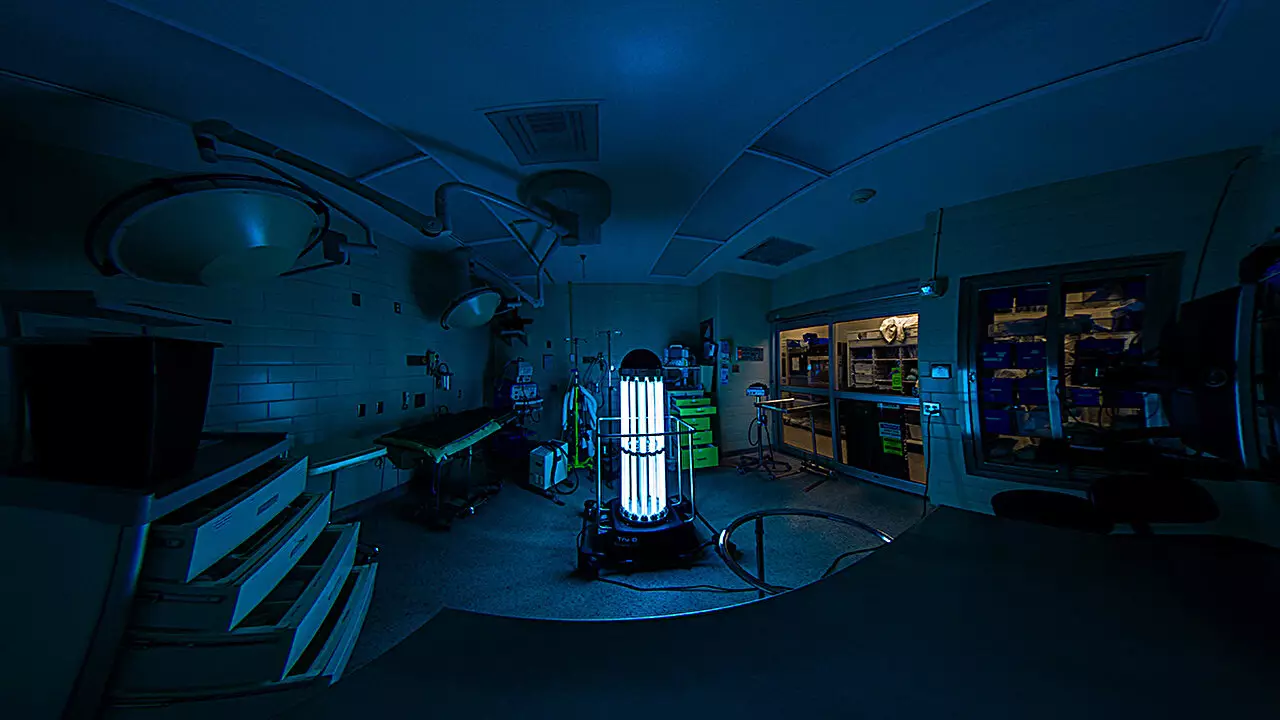Robots have become an integral part of our daily lives, with millions of Americans owning robotic devices that assist in tasks such as cleaning, mowing the lawn, or even carrying luggage. However, the use of robots in hospitals brings a new level of sophistication and efficiency. The Texas A&M Veterinary Medical Teaching Hospital (VMTH) recently acquired a stationary robot called Tru-D, or “Trudy,” that utilizes ultraviolet C (UVC) centers to eliminate infection-causing bacteria on surfaces. Unlike traditional cleaning methods, Trudy can target even the most resistant bacteria that can linger for months.
Hospital-acquired infections pose a significant risk to patients, staff, and visitors. Pam Douglas, the infection control coordinator at the VMTH, emphasized the importance of sanitation in preventing the spread of infections. Having witnessed the effectiveness of UVC disinfection robots in human hospitals during her time as a registered nurse, she advocated for the incorporation of Trudy in the hospital’s sanitation protocols. By implementing Trudy’s advanced technology, the VMTH can enhance its existing rigorous sanitation practices and provide a safer environment for critical patients.
Manual cleaning in hospitals is a labor-intensive process that requires meticulous attention to detail. In operating rooms, for example, everything must be removed and thoroughly cleaned before being put back into place. Not only does this process consume time and energy, but it also takes healthcare professionals away from their primary focus on patient care. Therefore, the addition of Trudy to the sanitation team at the VMTH allows the hospital staff to be more efficient and allocate their time towards providing optimal care to patients.
Trudy may not possess the mobility of traditional robots, but its impact on hospital sanitation is significant. Standing several feet tall and equipped with 28 UVC bulbs, Trudy’s cylindrical shape and vertical lights give it a resemblance to a science fiction robot. Once placed in a room, Trudy’s sensors analyze the space, determining the duration of the disinfection cycle. Smaller rooms typically require a cycle of 15-20 minutes, while larger spaces may need 30-40 minutes. This automated process ensures thorough disinfection without human intervention.
While UVC disinfection robots are commonly utilized in human hospitals, the adoption of this technology in veterinary hospitals is relatively rare. Since the acquisition of Trudy at the VMTH, it has been used over 800 times, covering various areas such as operating rooms, exam rooms, isolation rooms, and the intensive care unit for both large and small animals. The incorporation of Trudy in a veterinary setting demonstrates the commitment of the VMTH to provide the highest standards of infection control across all departments.
Operating Trudy does not require specialized training, as the controls are accessible via an iPad interface. The VMTH has ensured that multiple staff members, beyond the infection prevention department, are trained to operate Trudy effectively. The ease of use and accessibility of this advanced technology further contribute to the VMTH’s dedication to efficient sanitation practices.
The integration of robotic technology, exemplified by Trudy, has revolutionized hospital sanitation. By leveraging UVC disinfection capabilities, Trudy eliminates even the toughest bacteria, enhancing the VMTH’s existing sanitation protocols. The reduction in manual cleaning efforts allows healthcare professionals to focus on critical tasks, ultimately improving patient care. Despite being an uncommon application in veterinary hospitals, Trudy has proven to be indispensable at the VMTH in achieving the highest standards of infection control. As the field of robotics continues to advance, we can expect more innovative solutions to contribute to the improvement of hospital sanitation and overall patient safety.


Leave a Reply